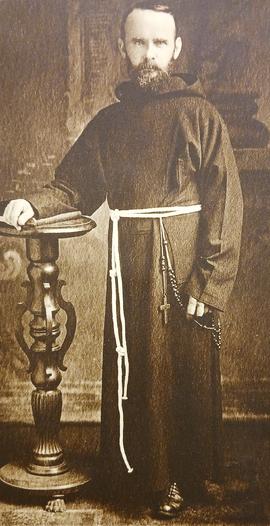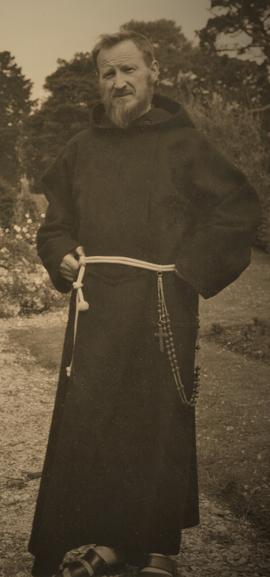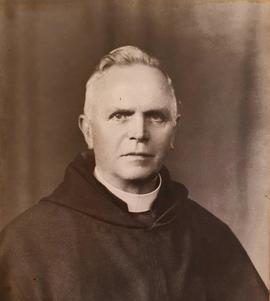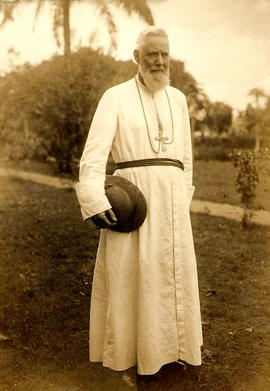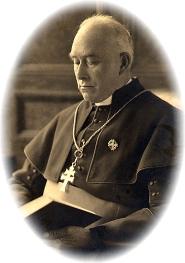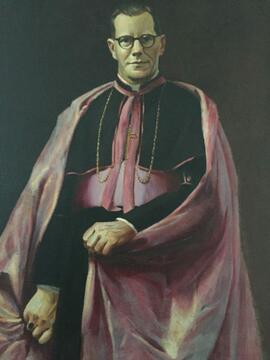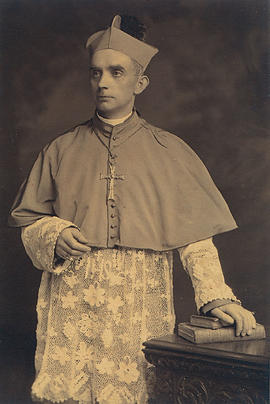From : https://www.dib.ie/biography/dignan-john-a2583
Dignan, John (1880–1953), priest and bishop of Clonfert, was born 13 June 1880 at Ballygar, Co. Galway, son of Thomas Dignan, farmer, and Sarah Dignan (née Kelly). He was educated at Esker College, Loughrea, and St Patrick's College, Maynooth, was ordained a priest (6 September 1903) for the Clonfert diocese, and in the same year joined the staff of St Joseph's College in Ballinasloe where he served until 1915, becoming president in 1905. He served as a curate in the parish of Creagh and Kildoney (1915–19) and as parish priest of Abbey, Loughrea (1919–23), and subsequently in Killimer, before being appointed a bishop (March 1924). A staunch nationalist, he had served in 1917 as president of the east Galway board of the Sinn Féin executive and was a central figure in the organisation of Sinn Féin courts in the county; in his absence, his parochial house in Loughrea was raided and bombed by the Black and Tans. He was adamantly opposed to the Anglo–Irish treaty, and at the time of his consecration as bishop of Clonfert in June 1924 caused a minor sensation by declaring: ‘I predict that the republican party is certain to be returned to power in a short time. Prepare for that day. Do your best for its quick approach.’ In communication with Patrick Hagan, the rector of the Irish College in Rome, he defended his remarks, believing that republicans had been treated badly and deserved public endorsement. Known for his strong Fianna Fáil sympathies, he endorsed their programme for economic independence in 1933, and hailed the 1937 constitution as the ‘Christian charter of a Christian people’. In 1936 he was appointed chairman of the National Health Insurance Society (NHIS) and became the hierarchy's leading authority on social issues. He is best remembered for his 1944 pamphlet Outlines of a scheme of national health insurance. Strongly influenced by catholic social theory and following the continental pattern of health insurance, it exalted the authority of the family, and suggested the creation of a central insurance board and the removal of all responsibility for health and welfare from the government's control. GPs (employed in newly created health centres) were to be paid a salary or a combination of salary and fee or capitation with private practice, and church representation on the central and regional committees would supervise the service, to be financed by contributory payments. Dignan maintained the subtext of the plan was that ‘the whole poor law legislation. . . should be blotted out from our statute book and – from our memory. The [present] system is tainted at its root and it reeks now, as it did when introduced, of destitution, pauperism, and degradation.' The main weakness of the plan was that no costings were provided to show that it was financially viable, but it played an important role in forcing debate and articulating a new view of access to the health services. It infuriated the minister for local government and public health, Seán MacEntee (qv), who argued that Dignan's plan would confer power upon ‘doctors and ecclesiastics rather than democratically elected politicians’ and in 1945 Dignan was replaced as chairman of the NHIS by a civil servant. The clash was a catalyst in health becoming a government department in its own right (independent of local government) in 1947 and foreshadowed the Mother-and-Child controversy of 1951: it was ‘the first approximation to a church versus state clash that the country had seen since 1922’ (Garvin, 71–2). Dignan died 12 April 1953. The Labour party, who had supported his proposals, lamented that ‘the cause of social progress is poorer by his passing’.
Sources
Ir. Times, 14 Apr. 1953; John H. Whyte, Church and state in modern Ireland 1923–79 (1980); Ruth Barrington, Health, medicine and politics in Ireland 1900–79 (1987); Bernard Canning, Bishops of Ireland 1870–1987 (1987); J. J. Lee, Ireland 1912–85: politics and society (1989); Dermot Keogh, The Vatican, the bishops and Irish politics 1919–39 (1991); Tom Garvin, Preventing the future: why was Ireland so poor for so long? (2004)
